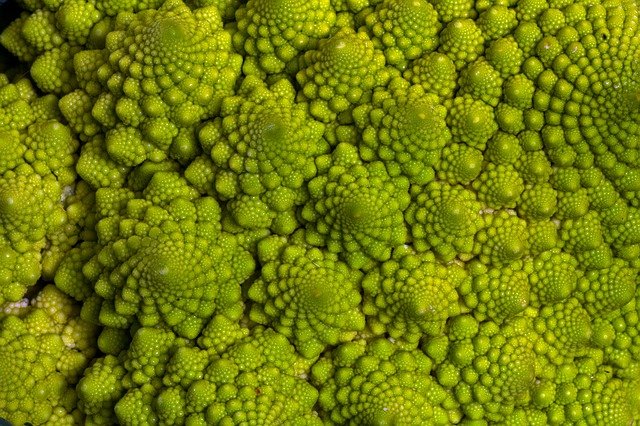The mystery of the formation of one of the most peculiar plant forms – the Romanesco cauliflower – has been solved by a team of scientists from lead by researchers from the Centre national de la recherche scientifique (CNRS) and the French National Institute for Research in Digital Science and Technology (Inria) in an article published in Science.
Thanks to work combining mathematical modelling and plant biology, the scientists were able to determine that cauliflowers, and Romanescos in particular, are in fact buds that are designed to become flowers but which never reach their goal. Instead, they develop into stems, which in turn continue trying to produce flowers. The cauliflower is born from this chain reaction, resulting in a succession of stems upon stems. This study shows that the brief incursion of buds into a flowering state profoundly affects their functioning and allows them, unlike normal stems, to grow without leaves and to multiply almost infinitely. The atypical shape of the Romanesco is explained by the fact that its stems produce buds more and more rapidly (whereas the production rate is constant in other cauliflowers). This acceleration gives each floret a pyramidal appearance, making the fractal aspect of the structure clear. The study highlights how the selection of mutations in plants during the process of domestication has changed their shape, sometimes drastically, into the fruits and vegetables on our shelves.
Scientists from the laboratoire de physiologie cellulaire et végétale (CNRS/CEA/INRAE/Université Grenoble Alpes) and the laboratoire reproduction et développement des plantes (CNRS/ENS Lyon/INRAE) participated. Several other organizations were also involved in the study: the Instituto de Biología Molecular y Celular de Plantas (IBMCP), Spain; the University of Milan, Italy; the University of California (UCLA), USA; the University of Nottingham, UK; and the National Autonomous University of Mexico.
Read the paper: Science
Article source: CNRS
Author: Elie Stecyna








